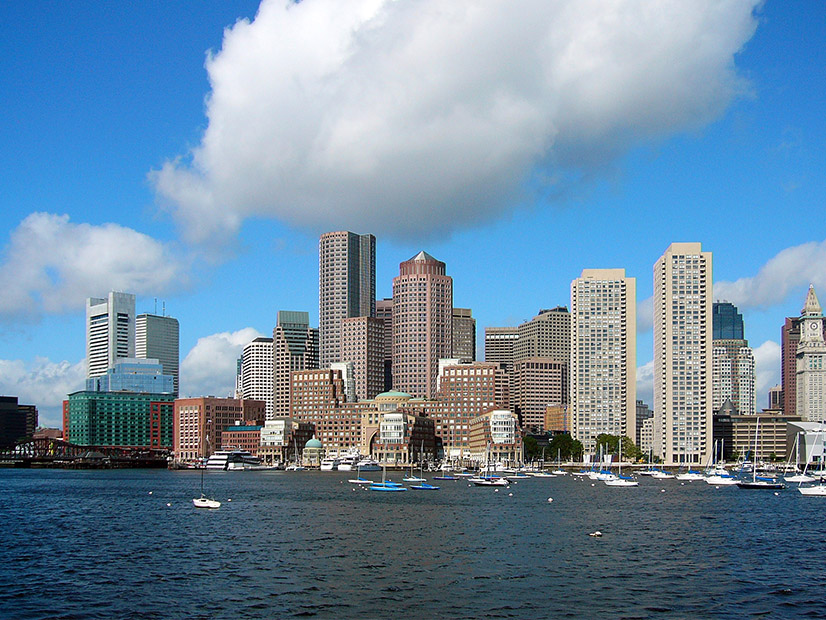
The Massachusetts Commission on Clean Heat signaled Thursday its intention to recommend that regulators consider adopting a clean heat standard (CHS) for the state’s buildings sector.
“We propose to request that the Department of Environmental Protection develop the design for meeting [building emission] caps via regulation, including the consideration of a [CHS] for projects that transition from an emitting heating resource to a non-emitting heating resource, including weatherization and transition to heat pumps,” said Judy Chang, undersecretary of Energy and Climate Solutions at the Executive Office of Energy and Environmental Affairs (EEA).
Chang presented several potential commission recommendations for buildings as part of a draft 2025/2030 Clean Energy and Climate Plan (CECP) due to the state legislature July 1. The 22-member commission, which Chang chairs, will develop clean building sector policy recommendations throughout this year that will inform the CECP and other efforts to achieve net-zero emissions by 2050.
“We’re analyzing the potential for a CHS to help achieve the [greenhouse gas] emission reductions that we need and the potential implications for the costs and how to spread those costs,” Chang said.
To support building decarbonization, the commission is creating a mechanism for building owners to report clean heat metrics, such as energy use intensity and GHG emissions, she said. The mechanism, she added, will be the first step in standardizing how different building sizes and types report emissions.
The commission also wants to align state programs with clean heat goals.
That effort could include what Chang called “sweeping” changes that adjust how utilities invest in infrastructure and shift the purpose of the Mass Save program from energy savings to GHG emissions savings.
In December 2020, the administration released an interim 2030 CECP, but passage of the 2021 Next Generation Roadmap requires both a 2025 and 2030 plan. EEA must develop the 2025/2030 CECP with increasing economy-wide limits for reaching net-zero emissions in 2050 and sector-specific sublimits.
The draft CECP is based on policies and programs that are under development and underway and take into consideration the public comments submitted on the interim CECP over the last year, Chang said.
To reach state emission targets, the draft CECP proposes emission sublimits for residential building heating of a 27% reduction by 2025 and a 44% reduction by 2030. Proposed sublimits for the commercial and industrial heating sector are 20% by 2025 and 47% by 2030.
Key factors in the draft for achieving building sector sublimits include weatherizing one-third of buildings, installing heat pumps in one-third of homes, electrifying commercial buildings and providing gap funding for clean heat solutions.
Comments on the draft CECP are due April 30.
Transportation
While decarbonizing Massachusetts’ building sector will be “challenging,” Chang said, the primary driver for “deep decarbonization” in the CECP through 2030 is electrification of vehicles.
The state has already issued California’s Advanced Clean Trucks regulation and will move forward with the Advanced Clean Cars II (ACCII) regulation when the California Air Resources Board finalizes it. Under the clean trucks regulation, commercial vehicle sales must transition to zero-emission technologies at increasing rates, with 75% of medium-duty truck sales being zero-emission by 2035.
In a recent updated draft of the ACCII regulation, the board proposed increasing early year target percentages for zero-emission new car sales on the path to 100% in 2035. (See New Draft of Advanced Clean Cars II Would Speed ZEV Sales.)
Other policy recommendations that would be new to the CECP focus on school buses, vehicles for hire and delivery trucks, according to Chang.
Massachusetts already launched an electric school bus program earlier this year to help school districts compete for federal funding, and the draft CECP proposes launching a vehicle-for-hire program for high-visibility, high-mileage drivers.
The program will “help educate the public about the comfort and the value of EVs,” Chang said.
A separate program proposal for delivery trucks would provide incentives for electrifying high-mileage vans and trucks.
“The rise of e-commerce makes delivery trucks a growing source of emissions, particularly near our ports and more broadly in our residential communities,” Chang said. Funding for the three programs, she added, is included in a $9.7 billion transportation bond bill currently before the Massachusetts legislature. (See Mass. Transportation Bond Bill Seeks to Unlock $4B in IIJA Funds.)
Through the draft CECP proposals, the state expects to have 200,000 registered passenger EVs by 2025 and 900,000 by 2030. In addition, 50,000 medium- and heavy-duty zero-emission vehicles would be in use by 2030.
